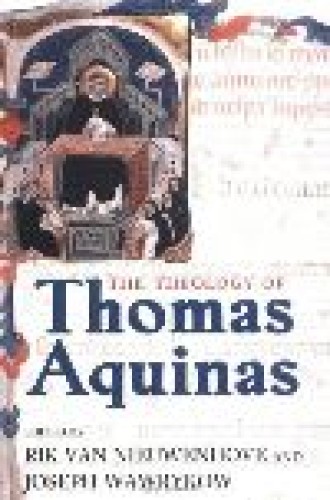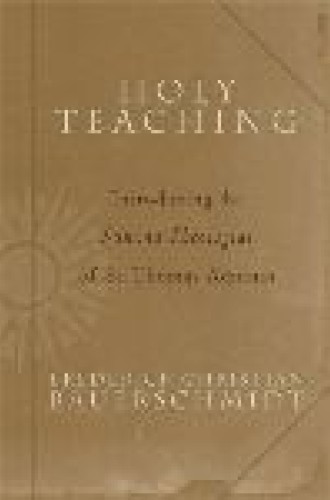Aquinas for Protestants
One of the fascinating aspects of the events surrounding the passing of Pope John Paul II was the almost universal outpouring of grief. The “people’s pope” was also claimed by millions of Protestants, many of whom stayed up through the night to watch his funeral and took his loss as that of one of their own.
From a historical perspective, this phenomenon was at once heartwarming and curious. After all, the pope has not been revered in official Protestant doctrine. He has been tolerated, at best, and more often than not he has been vilified. Protestants have been taught to reject the teachings of the Catholic Church, from its doctrine of grace to its conception of the priesthood and the sacraments, almost as fervently as they have been taught to reject non-Christian religions. Has something changed? Have Protestants discovered new connections with Catholicism, or come to appreciate the existing commonalities more deeply?
Two new books give readers the opportunity to explore these questions in unexpected ways by revisiting the thought and doctrine of that most Catholic of thinkers, Thomas Aquinas. The Theology of Thomas Aquinas is an anthology of 18 essays by a distinguished group of contemporary scholars. Holy Teaching is an in-depth commentary on selective portions of Aquinas’s greatest work.
Aquinas has always been held at arm’s length by Protestants. While Augustine—with his past of sexual excess and his conversion in the garden—has been adopted warmly, if somewhat uncritically, by evangelicals, Aquinas has remained quintessentially Catholic.
Such a fate seems fitting. Born in an Italian papal state in 1225, Aquinas was shipped off by his family to a nearby monastery when he was only five years of age. In a sense, he never left that monastery. Aquinas trained for the priesthood, became a Dominican friar, and filled his adult days attending church councils and writing legendarily dense theological tomes for his Catholic audience. Aquinas is credited with strengthening the Catholic understanding of infant baptism and crystallizing the Catholic ban on birth control. He’s also remembered as one who not only posed obscure questions but dared to offer the answers. (To the question of whether the dead will be raised with hair and fingernails, Aquinas replied with a confident yes.)
When Pope Leo XIII in 1879 instructed bishops and priests to “restore the golden wisdom of Thomas and to spread it far and wide for the defense and beauty of the Catholic faith,” he was at once proclaiming Thomism the official doctrine of the Catholic Church and solidifying the divide between Catholics and Protestants. What could Protestants possibly have in common with someone with Aquinas’s hyper-Catholic résumé?
A recurring theme of these two books is that there may be less of a divide between Aquinas and Protestantism than has been thought.
Eugene Rogers takes on this topic most explicitly in one of the essays in The Theology of Thomas Aquinas. It is true, he agrees, that Protestants from Martin Luther to Karl Barth have written derisively of Aquinas. “Protestant skepticism about the theology of Thomas Aquinas focuses on his doctrine of grace. Protestants worry that Aquinas has too high a view of human nature. . . . Proof of the Pelagian defect is supposed to be Aquinas’ reliance on Aristotle, the natural philosopher par excellence.”
By stressing the divine inheritance in each person, including human reason and intellect, Aquinas allegedly idolizes humanity and leaves little room for the loving acts of an all-powerful God. Like a latter-day member of the Pelagians, the fifth-century Christian sect which insisted that a truly just God must give each of us the ability to save ourselves via our own free will, Aquinas creates a theory of salvation that rests too squarely on the shoulders of humanity, the argument goes.
Rogers debunks this view and shows—quite convincingly—that Aquinas relies on grace every bit as much as his Protestant critics do.
In Holy Teaching, Frederick Bauerschmidt, professor at Loyola College in Maryland, underscores a similar point. Countering common portrayals of Aquinas as a slave to reason, an Enlightenment humanist before his time, Bauerschmidt concentrates on some of Aquinas’s less-read writings, including those on the topic of grace. Bauerschmidt’s presentation takes some getting used to. For the sections of the Summa Theologiae that he covers, he translates the original text and includes it in its entirety. His points are completely contained in extensive, small-type footnotes which, at times, exceed in length Aquinas’s own words.
To the persistent reader with 20/20 vision, the reward is a lucid commentary. Bauerschmidt concludes with regard to Aquinas’s view of salvation, “If preparation for grace involves a ‘movement,’ then, like all movement, it cannot be done independently of God’s grace.” Indeed, even the preparation for God’s grace “cannot be done apart from God’s gracious action.”
Both volumes are correctives of sorts. While Catholics and Protestants alike typically read Aquinas first for his natural law doctrine and next for his proofs of God’s existence, topics which seem to stress the human capability of discovering God’s truth, these volumes portray an Aquinas far more focused on the mystery of God. In addition to extensive treatments of grace, both books have sections on Aquinas’s views on faith, the Trinity, the sacraments, the suffering of Christ, original sin, and soteriology. Both downplay Aquinas as natural-law thinker and rationalist.
The resulting Aquinas is one who is closer to Augustine and, yes, closer to Protestantism than is the know-it-all, answer-man who is sometimes conjured by Catholic supporters and derided by Protestant detractors. The insight offered by these two new volumes is that there is much in the real Aquinas to please even his fiercest theological foes. As Rogers observes, “Luther might have turned Aquinas to his own purposes had he known Aquinas better.”
One reason Aquinas has so often been mistakenly portrayed by Protestants is that he is just so difficult to read. One estimate has his Summa Theologica topping 2 million words. Few professional theologians have waded through the whole work. Fewer still have made sense of it all. Bauerschmidt’s line-by-line commentary is called for precisely because these writings, filled as they are with obscure references to medieval Christian theology, Muslim philosophy and Greek thought, quite plainly demand it.
Will The Theology of Thomas Aquinas and Holy Teaching help the lay reader make sense of Aquinas’s thought? Perhaps. The former volume promises to “be of considerable service . . . to newcomers to Aquinas,” but it is at times as dense as Aquinas himself, and the authors too often rely on untranslated phrases of Latin. Holy Teaching requires the reader to bounce back and forth between Aquinas’s original words and literally thousands of footnotes which explain the thoughts. In other words, both texts require the reader to work hard.
That is only fitting. Aquinas has always demanded as much. Thomists should take heart, though. If people are willing to stay up until 3:00 a.m. to say goodbye to a pope, perhaps they are willing to spend a few late nights reading two challenging works which explore the theology behind the church that the pope led.




